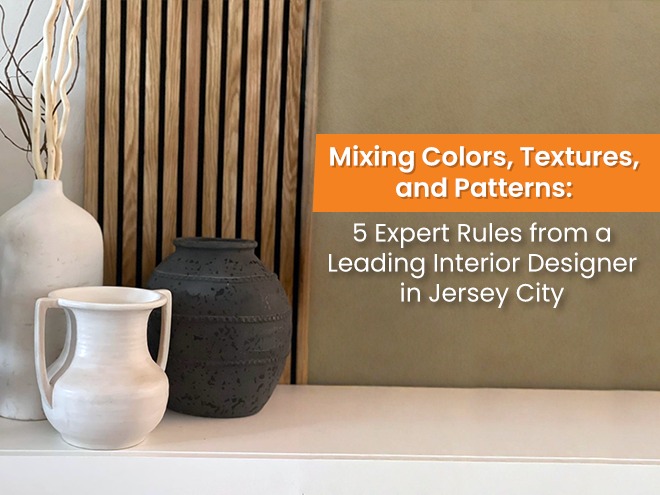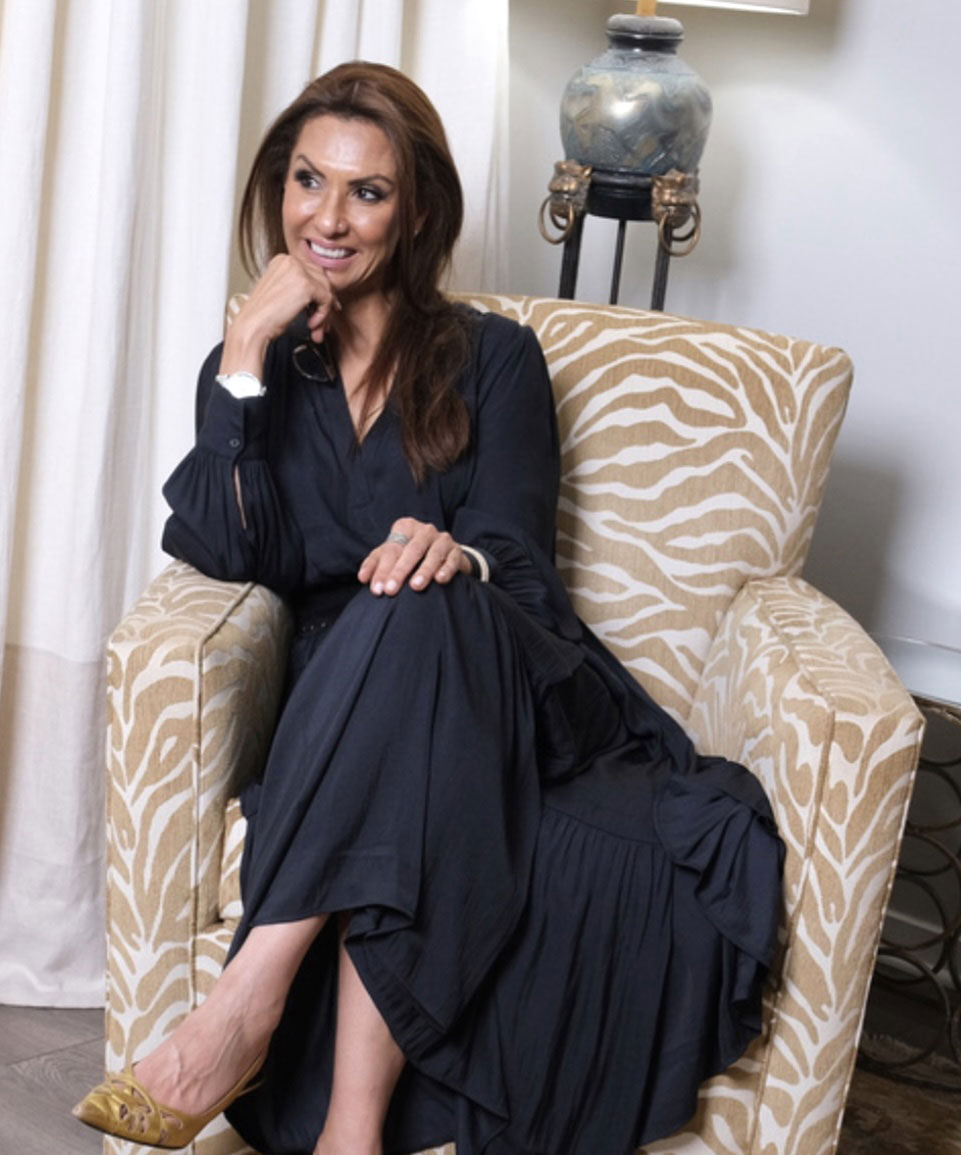Mixing Colors, Textures, and Patterns: 5 Expert Rules from a Leading Interior Designer in Jersey City
Every home tells a story & the way colors, textures, and patterns come together writes its mood. Luxury interior design firms know that a space isn’t just about looking beautiful. It’s about feeling balanced, welcoming, and alive. Mixing these elements the right way can create depth, personality & harmony; done the wrong way, it can make even a well-furnished room feel chaotic. Here are five expert rules drawn from years of experience in high-end residential and commercial projects that show how to truly make a space feel exceptional:-
- Visual Weight Budget – The first step in mixing colors, textures, and patterns is creating a visual weight plan for your room. Think of your space like a balance sheet: large surfaces such as walls, floors, and main furniture pieces form the foundation, while secondary elements like smaller furniture, textiles, and accessories fill in the supporting layers. Patterns should follow a hierarchy, with solids forming the base, medium prints adding interest & bold patterns used sparingly for accents. This method ensures that no single element dominates the space & allows designers in residential interior design to plan rooms thoughtfully, avoiding clutter or imbalance.
- 3-Scale Pattern Hierarchy – Patterns need structure. Using a three-scale pattern hierarchy keeps a room visually cohesive. Large patterns anchor the space, medium patterns support, and small patterns accent. Interior designers in Jersey City often use ratios inspired by the golden ratio to set scale proportions. Additionally, alternating directionality into vertical vs horizontal lines helps guide the eye naturally and can subtly influence how spacious or cozy a room feels. This technique is a hallmark of the best interior designers NJ.
- Light-First Color Validation – Colors can look completely different depending on the lighting in a room. Designers always test paint and fabric samples under multiple lighting conditions, like natural sunlight during the day, the warm glow of evening lamps & any task or overhead lighting you’ll use daily. Watching how colors change helps ensure that your chosen palette looks consistent & vibrant at all times.
- Texture Sequencing – Textures change how a room feels & looks. Designers usually layer textures from the bottom up. Begin with rugs and curtains, then add large furniture. Next, include upholstery & finish with smaller accessories. Heavy textures on the floor help reduce noise while softer textures on top make the space feel welcoming. Picking textures based on how people touch and use them keeps the room both comfortable and durable. This level of attention to layering is what separates good design from exceptional design.
- Material Story and Durability Matrix – Every room has a use index (high, medium, or low traffic). Matching patterns and materials to this index prevents untimely wear and preserves aesthetics. Busy areas need durable fabrics & subtle patterns that hide wear. Medium-traffic areas allow for mixed textures and medium-impact patterns. Low-traffic zones can showcase bold designs & delicate textures.

Trusted Design for Homes That Inspire
Mastering the art of mixing colors, textures & patterns requires careful planning. You need to layer things thoughtfully & pay attention to every element. By applying principles like a visual weight plan, pattern hierarchy, light testing, texture sequencing, and material selection, you can create rooms that feel balanced, functional, and inviting.
At Avantte Interiors, we bring this expertise to life. As a leading New Jersey luxury interior designer, we combine technical precision with a personal touch, guiding you from concept to completion. Our goal is to create homes that can showcase an extension of your individuality.
FAQs
- How do I choose the right colors for my room?
Check your paint and fabric samples in different lights for eg., morning sunlight, evening ambient light, and task lighting, to see how colors change in different conditions.
- What is the best way to mix patterns without clashing?
Use three sizes of patterns: large ones for the main areas, medium for supporting pieces & small accents. Keep the balance so everything works together.
- How do I select textures for high-traffic areas?
Choose strong, durable fabrics and simple patterns for busy areas. Save delicate textures and bold patterns for spaces that aren’t used as much.



